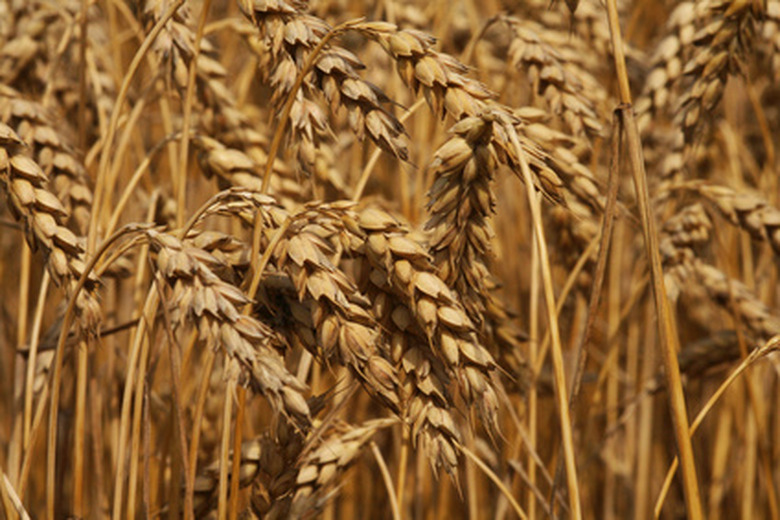Fertilizers Used For Wheat Growth
Wheat is a specialized crop that requires particular dosages of specific nutrients for optimal growth and production. For optimal wheat growth, infuse the soil with nutrients and till well before planting. The most important fertilizing period for wheat is from the time it sprouts until its heads begin forming.
Nitrogen
Nitrogen is the most prominent fertilizer required for exceptional wheat growth. According to the University of Minnesota, the best way to calculate nitrogen amounts for wheat crops is the calculation, "NRec = (2.5) YG – STN(0-24 in.) – NPC," where YG stands for yield goal, STN stands for "nitrate-nitrogen (NO3-N) measured to a depth of 2 feet, lb. per acre" and NPC stands for the amount of nitrate naturally occurring from the previous crop. This equation is especially useful for calculating nitrogen supplementation for soils with a high level of organic nutrients.
- Wheat is a specialized crop that requires particular dosages of specific nutrients for optimal growth and production.
- This equation is especially useful for calculating nitrogen supplementation for soils with a high level of organic nutrients.
Phosphate
If efficiency is your goal, apply phosphate with a gardening drill aimed directly at the roots. Phosphate is not always necessary with wheat crops. For example, if the soil contains high amounts of phosphorus, phosphate supplementation is not necessary. On the other hand, if the soil is extremely damp at the time of planting, apply phosphate with the seeds.
Potash
Potash application varies based upon the levels of potassium in the soil. If the soil tests above 121 ppm or higher, no potash fertilizer is required that year. Potash does not absorb well into the soil, so it should be applied before planting and tilled into the ground. Ideally, potash should only be applied to the soil once every two years.
- If efficiency is your goal, apply phosphate with a gardening drill aimed directly at the roots.
- On the other hand, if the soil is extremely damp at the time of planting, apply phosphate with the seeds.
